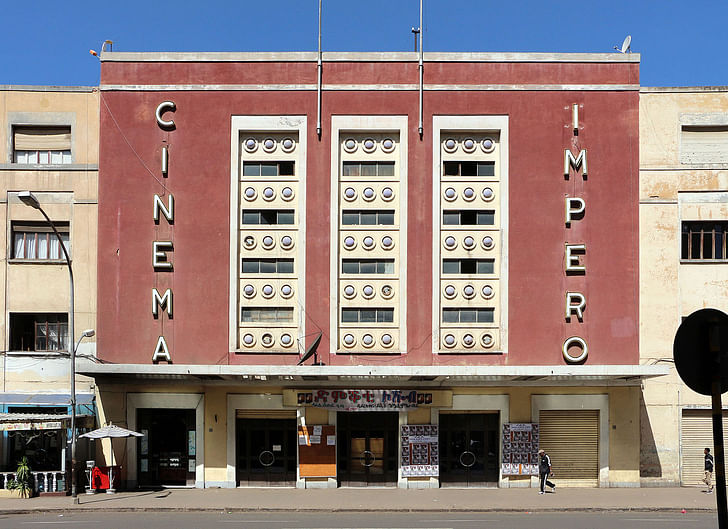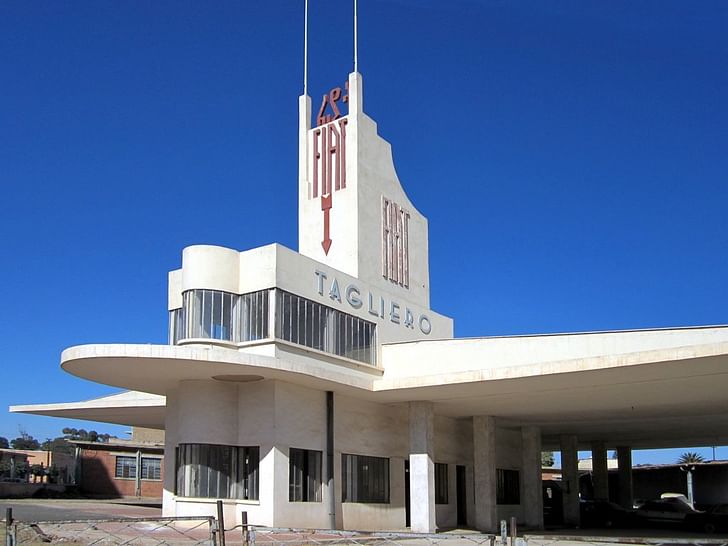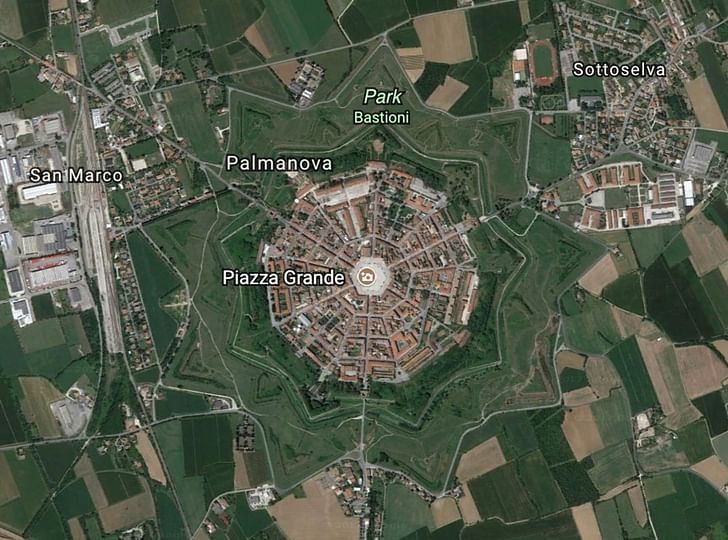

The 41st session of UNESCO's World Heritage Committee has been taking place in Kraków, Poland since July 2nd. As the meeting comes to a close, the week has resulted in the designation of 21 new sites and five site boundary changes have also been approved.
A number of the newly listed sites are manmade marvels that architecture and design fans will be delighted to see get World Heritage status. For one, the UN's cultural organization demonstrated their growing commitment to the preservation of modern architecture with the additions of Asmara and two new Bauhaus buildings to the list. In addition, a number of historic cities will join the ranks to be recognized for their preservation of ancient architectural styles and building techniques. A Russian Cathedral on the town-island of Sviyazhsk and the English Lake District that inspired and housed numerous Romantic poets also made the cut.
Hebron’s Old City, along with the Tomb of the Patriarchs, in the Israeli-occupied West Bank has been listed as a World Heritage site. The Tomb is the second holiest site in Judaism and the fourth in Islam. It is also revered by Christians as Abraham, Isaac and Jacob’s burial place. The town of Hebron, itself, is one of the oldest continuously inhabited towns in the world and is one of the few Islamic cities that has defended its authentic set up. The town’s limestoned buildings, striking arched roofs, and maze of alleys are well-preserved examples of the Mamluk-style architecture that dominated the region from 1250 into the 16th century.

Called the Modernist City of Africa, much of Eritrea’s capital, Asmara, was built under Italian rule from 1893 to 1941 and the city became the site for many experimental projects from pre-eminent Italian architects. The city contains one of the highest concentrations of Modernist architecture that still remains intact. Giuseppe Pettazzi’s Fiat Tagliero Building and Mario Messina’s Cinema Impero are among some of the most recognizable. UNESCO’s addition of Asmara shows the council’s increased focus on preserving modernist work.

This listing includes 15 examples of defense works scattered throughout Italy, Croatia and Montenegro. The site extends for more than 1,000 km and is a complex defense system built by the Venetians between the 16th and 17th Century. These fortifications were intended to protect the Republic of Venice from threats by other European powers to the northwest, and from potential intruders entering through the sea routes and ports in the Adriatic Sea. These structures would come to define military defense in the age of gunpowder and in particular, the Italian design of the alla moderna bastion, or star fort, became heavily employed throughout Europe for the following three centuries.

M’Banza Kongo was the political and spiritual capital of the Kingdom of Kongo, one of the largest constituted states in Southern Africa from the 14th to 19th centuries. It is located in modern Angola’s northern province and is home to a number of historical ruins. Affected by European influences, the city was occupied by the Portuguese who brought in European methods of construction and the use of stone to the existing area. The arrival of the Portuguese in Central Africa, and the subsequent import of Christianity, brought about profound changes and the town is site to the first church built south of the Equator.
UNESCO has listed the Lake District for its beautiful hills, mountains and lakes as well as its manmade splendors.The region, formed by Ice Glaciers, was greatly admired in the 18th century and onwards by the Picturesque and later Romantic movements; William Wordsworth, Beatrix Potter and John Ruskin all chose this majestic landscape as their home. It’s historic buildings, towns and villages, are vital elements that add to the regions charm. Styles range from early vernacular to Georgian, Victorian and Edwardian. Distinctive architectural elements including bank barns, packhorse bridges, hogg houses, circular chimneys, and “crow-step” gables, give the Lake a unique sense of place.
The 600-year-old city was founded by Sultan Ahmad Shah and has a rich architectural heritage from the sultanate period. It is surrounded by the massive Bhadra Fort that walls and gates the city and is scattered with numerous mosques, tombs, and temples of historic significance. Today, Ahmadabad has outgrown the citadel to become one of the largest city of the state of Gujarat in India. Although the UNESCO listing is limited to its walled quarter, Ahmadabad at large went on to become a hub for modern architecture. Le Corbusier has four buildings here and Louis Kahn’s Indian Institute of Management campus also resides within city limits.
Kulangsu, a tiny island located on the estuary of the Chiu-lung River in China, was established as an international settlement in 1903 and contains a hoard of historical architectural treasures. As a commercial port jointly administered by Chinese and foreigners, it became an important site for cross-cultural exchange. The cultural fusions that emerged led to a mixture of different architectural styles including Traditional Southern Fujian Style, Western Classical Revival Style and Veranda Colonial Style. In particular, the Amoy Deco style was widely adopted and the island is scattered with mansions that fuse early 20th century Modernism and Art Dec with Eastern designs.
Originally, UNESCO inscribed the bauhaus monuments located in Weimar and Dessau onto the the World Heritage List back in 1996. They are now extending this listing to include the Houses with Balcony Access in Dessau—three storey brick blocks for low-income students—and the ADGB Trade Union School in Bernau. Both were built under the direction of Hannes Meyer, whom was Bauhaus founder Walter Gropius’s successor, and are exemplary of the austere design, functionalism and social reform that would come to mark the movement.

Yazd is one of the oldest towns on earth and is believed to be the largest inhabited adobe city. It encompasses thousands of traditional dwellings, bazaars, mosques, Zoroastrian temples, hammams or steam rooms, and qanat systems, a type of of underground irrigation system best known from Iran. The earthen architecture has persevered through modernization and the city remains a large collection of public-religious architecture comprised of Islamic design elements from different periods in harmonious combination with climatic conditions.
The Assumption Cathedral and Monastery are located in the town-island of Sviyazhsk, Russia. The town was founded in 1551 by Ivan the Terrible and the site is representative of the political and missionary program developed under his rule to extend the Moscow state. The Cathedral, built in 1561, contains 16th century frescoes that are among the rarest examples of Eastern Orthodox mural paintings and cover an area of over a thousand square meters. The Cathedral is currently under restoration, but intended to open to public within the year though access will remain limited.
No Comments
Block this user
Are you sure you want to block this user and hide all related comments throughout the site?
Archinect
This is your first comment on Archinect. Your comment will be visible once approved.